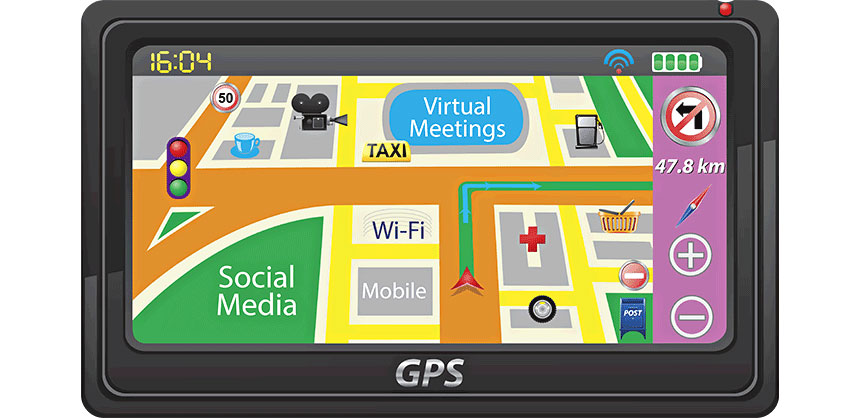Meetings Tech: Navigating the Digital RevolutionMarch 1, 2014
By Melissa Van DykeMeetings Tech: Navigating the Digital Revolution

 Melissa Van Dyke is president of the Incentive Research Foundation. She previously was the managing consultant of the Employee Engagement Practice and held leadership positions in Solution Management, Product Development and Business Technology Solution Management at Maritz. m.vandyke@theirf.org, www.theirf.org.
Melissa Van Dyke is president of the Incentive Research Foundation. She previously was the managing consultant of the Employee Engagement Practice and held leadership positions in Solution Management, Product Development and Business Technology Solution Management at Maritz. m.vandyke@theirf.org, www.theirf.org.
It’s no secret that we are in the midst of a digital revolution. The number of mobile phones now nearly equals the number of humans on the planet (6.8 billion vs. 7 billion respectively) and is set to outpace humans very soon; with 1.6 billion users, Facebook now holds the distinction of being the fourth most populous country in the world (if it were allowed to hold such stature); and the amount of data pushed through wireless networks is set to grow 66 percent over the next five years.
Given the amount and velocity of digital change, how are meeting planners adapting? What is influencing their adoption of these technologies and what pitfalls are they encountering when planning their meetings? To begin to understand the answers, the Incentive Research Foundation (IRF) partnered with New York University’s Preston Robert Tisch Center for Hospitality, Tourism and Sports Management on a qualitative study to explore how this digital revolution is helping meetings and incentive planners achieve their goals; what is driving their decisions; and what is impeding their intended implementations.
The primary trends uncovered in the study revolve around Wi-Fi, virtual, social media and mobile applications.
Wi-Fi
By far the biggest technology change noted by planners was the dynamic tension created by burgeoning and unmet Wi-Fi needs. This is understandable as many of the other trends (social media, mobile applications, virtual meetings) all depend at some level on this underlying 802.11 wireless local area network technology. The planners with whom we spoke viewed the need for Wi-Fi as vital for successful meetings, but felt constrained to advance their implementations as many venues offer only limited or expensive availability. This dynamic tension between the needs of meeting planners and certain hotels’ infrastructure constraints will be key to the meetings technology conversation for the next few years. Luckily, as hotel chains realize the monetary value of “Wi-Fi everywhere” and new market entrants allow meeting planners to BYOW (bring your own Wi-Fi), planners’ capabilities will certainly expand in the near term.
Social Media
In the IRF’s recent Pulse Study conducted in the fall of 2013, more than 60 percent of planners had used social media in some manner over the last year to augment their programs. Especially for incentive travel programs, social media is seen as a way to build community, engage attendees on and offsite, and market the program to increase its motivational allure. Although it also holds potential for peer-to-peer learning opportunities in large audiences, social media certainly can have mixed reviews based on the makeup of the audience.
The possible successes, and potential problems, of social media present a double-edged sword for planners who must balance this new engagement source with the security and public relations risks that the technology presents. This is why providers such as Red Button TV are gaining in popularity. With the ability to advise on social strategy, help planners numerically calculate social media’s value to their event and cull tweets for potential PR hazards, planners have a much greater ability to tip the scale toward reward versus risk when such partners are involved.
What is most important for planners to understand, however, is that even within a healthy social media implementation, the 1:9:90 rule will take hold. Only one percent of users will create content on average, with 9 percent reacting to these creations, and the remaining 90 percent acting as viewers only.
Mobile
With laptops, smartphones, tablets, MP3 players and e-readers now in the mix, it is easy to understand why many studies are estimating the average number of mobile devices carried by North Americans and Europeans to be between two and three devices per person. The question for mobile, then, is not if mobile technologies are becoming a part of meetings but how planners are targeting their use within programs.
Planners need to understand the usage patterns of their audience before deciding how heavily to rely on mobile applications.
Our research shows that mobile applications are currently being used to cut paper costs and digitally distribute materials. They are also becoming an important tool for creating digital communities that mirror those created onsite. Providers such as QuickMobile are creating single or multiple event applications, which allow planners to facilitate interactions among attendees and their speakers, their leaders, event organizers and even other attendees. It’s important to note, however, that planners should first understand the types of operating systems predominant in their audience. They also should not assume that all attendees will automatically know how to download or use such applications. Additionally, while mobile applications usage is prevalent, that does not mean it is yet ubiquitous in all meetings. Planners need to understand the usage patterns of their audience before deciding how heavily to rely on mobile applications.
Virtual Meetings
Although the primary purpose of our research with NYU was not to understand the pros and cons in the implantation of virtual versus face-to-face meetings, it was instructive to learn that the planners we spoke with certainly saw virtual technologies as an ongoing and consistent consideration in their digital strategies. While much research on the impact of virtual meetings and their appropriate application in strategic meetings management continues, planners do seem to see the cost benefits of virtual meetings outweighing the negatives when it comes to meetings that consist of company updates, general staff meetings or other smaller, time-constrained internal meetings with a very low-level need for networking or teambuilding.
With the digital revolution by no means slowing in the near term, meeting planners are working diligently to navigate the various opportunities and pitfalls that each technology presents. Planners are finding that a meetings strategy is often incomplete without some level of discussion surrounding the digital strategy set to support it. At a minimum, Wi-Fi will continue to be an important point of dynamic tension between venues and planners until the onsite (or portable) infrastructure meets the additional social, mobile and virtual needs planners require. I&FMM












